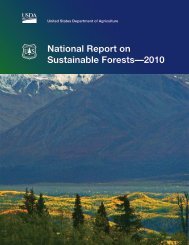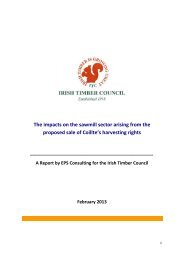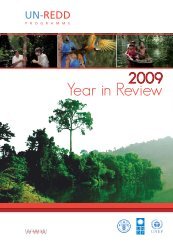pdf 1242 KByte - JIKO
pdf 1242 KByte - JIKO
pdf 1242 KByte - JIKO
You also want an ePaper? Increase the reach of your titles
YUMPU automatically turns print PDFs into web optimized ePapers that Google loves.
Policy Paper: Assessing prerequisites for market-based REDD+ activities 5<br />
2 Criteria for assessing REDD+ market readiness elements<br />
In the climate debate, three criteria are commonly being used to assess different policy design options and<br />
their implementation: effectiveness, efficiency and equity (see for instance: Stern 2008). Following the approach<br />
applied by Angelsen (2009a) and others, our assessment of the requirements developing countries<br />
should meet for participating in a future market-based REDD+ mechanism is based on these criteria with<br />
particular consideration given to positive as well as negative impacts (so called co-benefits and co-costs)<br />
potentially resulting from the implementation of REDD+ activities. In order to give special attention to the<br />
acceptance of REDD+ activities by local communities and individuals, the criterion of legitimacy has further<br />
been added to guide our assessment.<br />
2.1 Legitimacy<br />
The concept of overall political legitimacy refers to the acceptance of rules by a community. Instead of following<br />
these rules due to compulsion or pure self-interest, the community obeys them. Fritz Scharpf distinguishes<br />
between input and output-oriented legitimacy (Scharpff 1999, cited in Lederer 2011). Since outputoriented<br />
legitimacy is strongly connected to the results the instrument delivers, these aspects will in the following<br />
be covered through the criteria of effectiveness, efficiency and equity. Therefore, the criterion of<br />
legitimacy will be restricted to aspects of input-oriented legitimacy. Of particular relevance is the adequate<br />
participation of stakeholders in the decision making process, including open access to information, transparency<br />
of procedures and accountability. It is assumed that these elements promote the acceptance of the instrument<br />
established and are therefore pivotal for the success of REDD+ activities on the ground (Lederer<br />
2011).<br />
2.2 Effectiveness<br />
Effectiveness refers to achieving the objectives of climate mitigation actions. Deforestation and forest degradation<br />
are among the largest sources of greenhouse gas emissions. According to the Intergovernmental Panel<br />
on Climate Change (IPCC), more than 17 per cent of global CO 2 emissions are stemming from the forestry<br />
sector (IPCC 2007). Expectations that a future REDD+ mechanism could contribute to substantially reduce<br />
these emission are high. Therefore, the requirements for countries to participate in the mechanism should be<br />
established seeking to maximise the mechanism’s effectiveness. Critical aspects comprise the additionality of<br />
activities as well as the issue of carbon leakage and permanence, issues that will be treated in more detail<br />
later on (see also: Arens et al. 2010).<br />
2.3 Efficiency<br />
Efficiency refers to the cost-effectiveness of climate mitigation actions. REDD activities are expected to<br />
deliver relatively low-cost emission reductions, allowing to substantially reduce the overall costs of meeting<br />
GHG reduction targets (Stern et al. 2006). While this assessment might hold true when comparing REDD+<br />
Nicolas Kreibich, Christof Arens and Wolfgang Sterk<br />
Wuppertal Institute
















